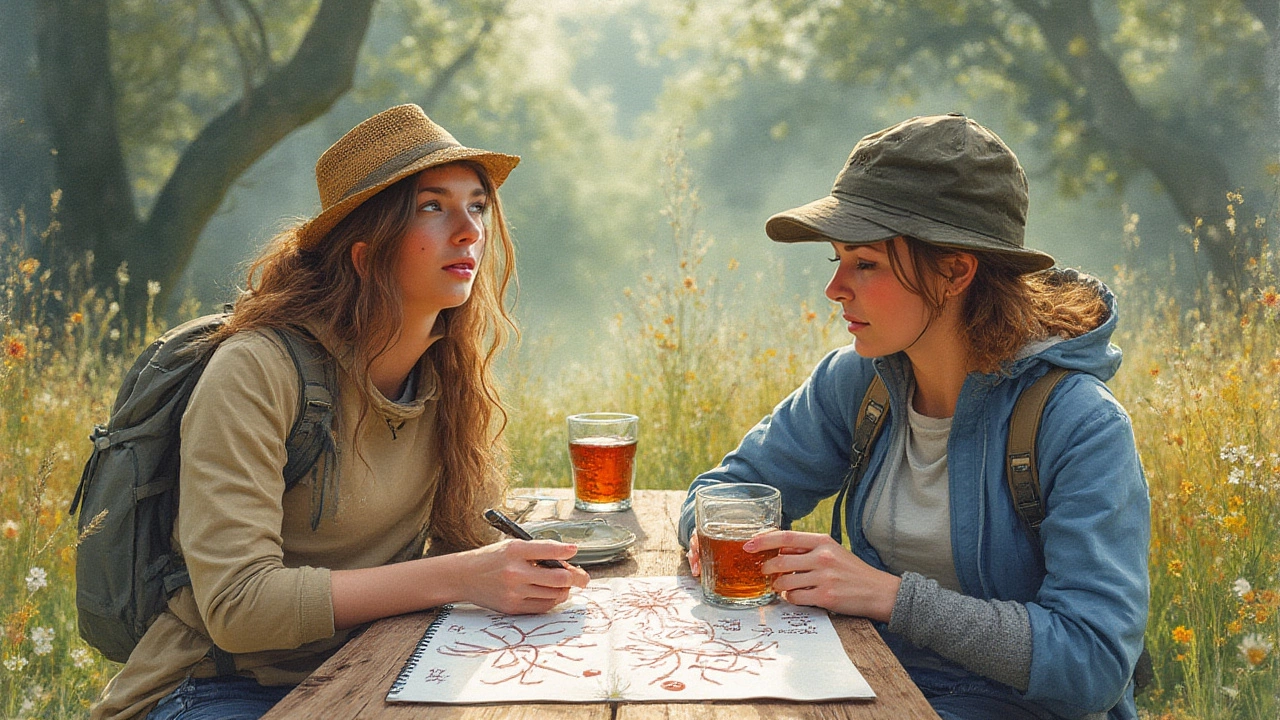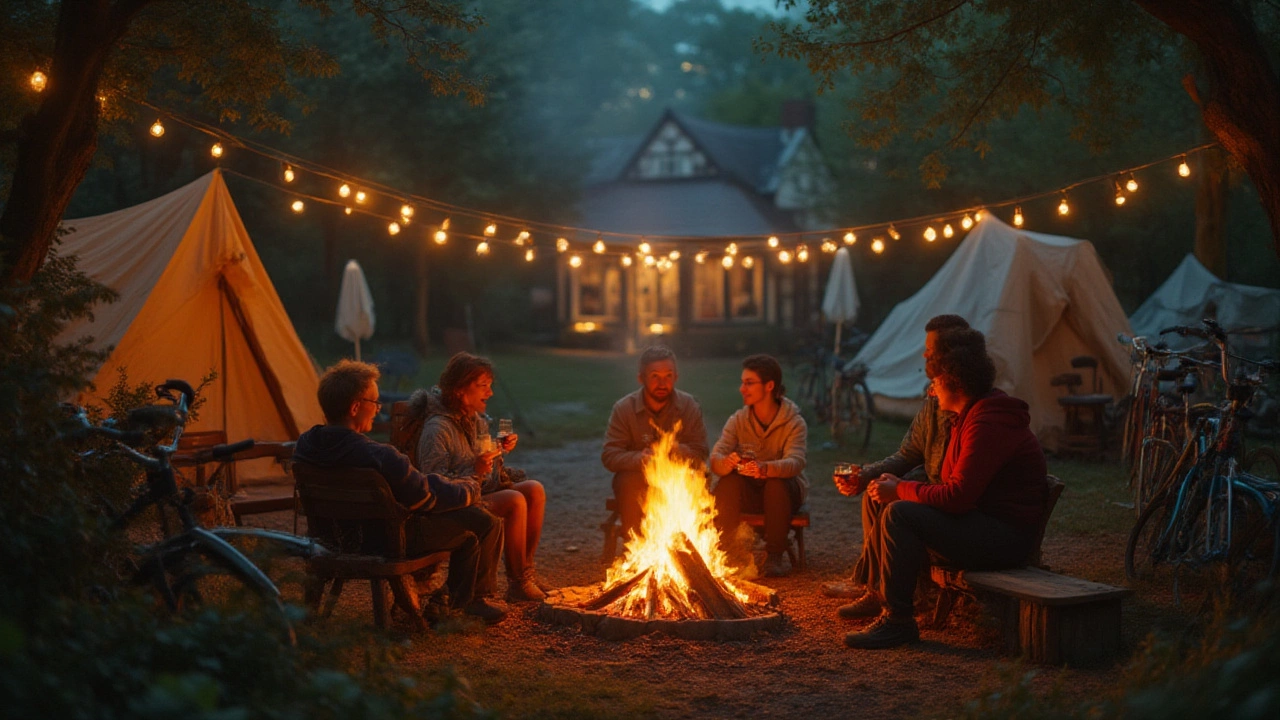Ever had a camping trip where everything just felt... off? You’re struggling to set up camp in the dark, the family is grouchy after a day stuck driving, and you barely remember why you left home in the first place. Thing is, there’s a simple, almost magical, trick seasoned campers have used for years to keep things enjoyable. The secret? It’s called the 2 2 2 rule for camping. Once you try it, you’ll never plan a road trip or camping holiday any other way.
What Is the 2 2 2 Rule for Camping?
Let’s get straight to it—what’s this rule all about? The 2 2 2 rule is a super simple guideline for road trips and camping tours, especially when you’re moving from site to site. Here’s how it breaks down:
- Drive no more than 200 miles or for no more than 2 hours at a time, whichever comes first.
- Arrive at your new campsite by 2 pm if you can help it.
- Stay at each campsite for at least 2 nights before moving on.
People sometimes play with the numbers, changing hours for miles or even tweaking it to ‘the 3 3 3 rule’ for longer breaks—which just shows how useful these simple rules can be when the open road is calling. This approach isn’t just for retirees with expensive motorhomes, either. Anyone who wants their camping trip to run smoother, feel more relaxed, and create actual memories worth keeping can use this rule. It’s genius because it solves so many issues in one go—fatigue, stress, and the non-stop hustle that turns holidays into chores.
Why Campers Swear by the 2 2 2 Rule
Let’s be real, the best bits of a camping trip definitely aren't about racing from A to B. It’s about the in-between moments—a lazy breakfast by the river, spotting deer at dawn, or dropping your kids into the world’s longest game of hide and seek. The 2 2 2 rule puts the brakes on rushing so you savour these moments instead of whizzing past them.
The idea comes from the world of full-time RVers in the US, where there’s serious respect for not burning out on the road. It works because spreading out your travel lets you actually rest, explore, and have a little spontaneity. Ever tried finding firewood or figuring out a weird foreign toilet system in the dark? Arriving at 2 pm gives you a massive buffer before night falls—and that means less stress all round.
- It keeps you mentally fresh because you’re not exhausted by long hauls.
- Your family (especially kids and pets) gets time to play and really dig into the campsite, not just exist in it.
- Campground owners love early arrivals. It gives you the best plot choices and less scrambling for late-night check-in codes.
- Pairing the 2-night stay with shorter drive times means more chances to explore local secret spots, instead of just ticking off places on a map.
- A survey in 2022 showed that UK campers who follow simple travel limits are 38% more likely to rate trips as “very relaxing” rather than “tiring”.
On road trips, tiredness is more dangerous than many admit. UK Department for Transport stats show fatigue is a factor in up to 20% of accidents on long-distance roads. By following the 2 2 2 rule, you massively cut those risks while giving yourself proper downtime.
| Benefit | Why It Matters |
|---|---|
| Arriving 2pm | Set up in daylight, avoid hassle, meet neighbours, time to unwind |
| Max 2 hours/200 miles driving | Stay alert, more rest stops, fewer arguments in the car |
| 2 nights minimum | Explore surroundings, less packing/unpacking, deeper experiences |

Breaking Down the 2 2 2 Rule: How to Use It
Let’s say you’re planning a roundtrip through Snowdonia or the Scottish Highlands with the kids in tow. The 2 2 2 rule can turn the chaos into a series of adventures rather than a slog. Here’s how to actually use it in real life—not just in theory:
- Mapping Routes: Start with your map app, and plot distances between stops. Keep legs under 200 miles, but more importantly, try not to spend over 2 hours driving without a break. Actual UK roads (especially those twisty B-roads) can eat up more time than Google Maps predicts, so build in buffer time.
- Arrive Early—Ideally by 2pm: This isn’t a random number. Campsites can get busy after 4pm. Getting in by 2pm means you can pick your pitch, settle in, do a quick food shop (or grab a cold pint), and relax before sunset. It also makes it much easier if you’re wild camping or searching for a safe, legal spot in less developed areas.
- Stay 2 Nights Minimum: Setting up camp takes time, same with packing it all away. A 2-night minimum means you actually enjoy your base before moving on. Plus, it reduces that ‘living out of the boot’ feeling.
Is it always possible? Of course not. Sometimes, you might be keen to push on, or can only grab a single night at a special site during peak season. The point is balance—it’s more about mindset than strict rules. But when you follow it, you end up less tired, less stressed, and your trip starts to feel like an adventure again.
Tweaks, Tips, and Troubleshooting
No rule works for everyone all the time, so the 2 2 2 rule is meant to be a helpful guide, not a strict law. Campers in the UK often find themselves tweaking ‘2 2 2’ to suit their trip, especially with all our lovely weather surprises and unpredictable traffic.
- If you’re heading along the North Coast 500 or weaving through Cornwall, you might drop the driving time to 90 minutes. Winding coastal roads can be beautiful but slow.
- Wild camping? Try to arrive even earlier if you’re looking for a good stealthy spot, as the best places fill up by late afternoon.
- Travelling with young kids? Break up travel with snack stops, short walks, or even spontaneous detours to play parks.
- During summer, days are longer, so a 3pm arrival time still gives you plenty of daylight—but stick with early stops if you’re travelling in spring or autumn.
- Motorhome users in Europe sometimes use the ‘3 3 3 rule’—300km, arrive by 3pm, stay for 3 nights. If you’re in Ireland or Scotland, scaling down makes sense, as distances between towns aren’t as vast but weather changes fast.
- On weekend trips, it’s tempting to race through lots of places. Instead, choose one or two base camps and do day trips out from there. It cuts down transit time and maximizes fun, especially if your group includes grandparents or pets.
Anecdotally, folks often report happier moods, better campsite choices, and those rare, golden evenings where everyone’s had time to decompress. If you’ve ever pulled into a site exhausted, with hungry kids and zero daylight left—just to pitch a soggy tent—you know how big a difference that buffer makes.

The 2 2 2 Rule Beyond Camping: Making It Work for Real Life
Here’s the cool thing: the 2 2 2 rule isn’t just for seasoned caravanners or RV owners. Tent campers, glampers, and even road trippers on a shoestring budget can use it. It’s about being intentional with your time—and modern life doesn’t often give us permission to slow down.
If you like data (and who doesn’t like a bit of data?), a 2023 survey by The Camping and Caravanning Club showed that UK campers who allowed for relaxed travel days reported a 52% higher rate of returning home feeling fully rested, compared to those who packed the most miles into their break. That change—actually unwinding rather than feeling like you need another holiday to recover from your holiday—is what makes the rule so popular.
There’s a subtle but real social benefit too. Turning up early lets you get to know your neighbours, join impromptu games, or just have a natter at the local pub before supper. Your batteries—physical and social—get the recharge they desperately need.
- In practice? If you’re the planner in your group, have a flexible schedule with room for dawdling. If you’ve got a horde of teens, bargain with them to agree on stops, and don’t overpack your day with tick-box sightseeing.
- Don’t be afraid to abandon the rule for one-off moments. If you hear about a must-see waterfall an hour away from your stopover, by all means, go for it. The point is to cut the grind, not the spontaneous fun.
- Test a shorter version on your next minibreak: drive no longer than two hours, arrive early if you can, and stay at least two nights. Even on a single weekend, you’ll feel the shift.
Camping, for most people, is about real life stripped back to basics—cups of tea outside, muddy boots, new friends. If following the 2 2 2 rule gives you more of that good stuff and fewer hours spent angry at a satnav, why not?
